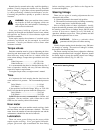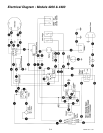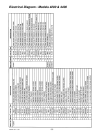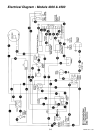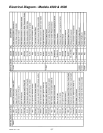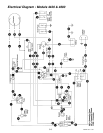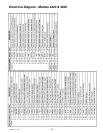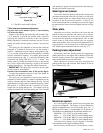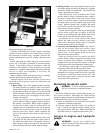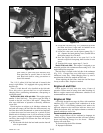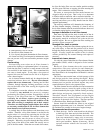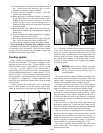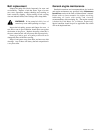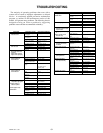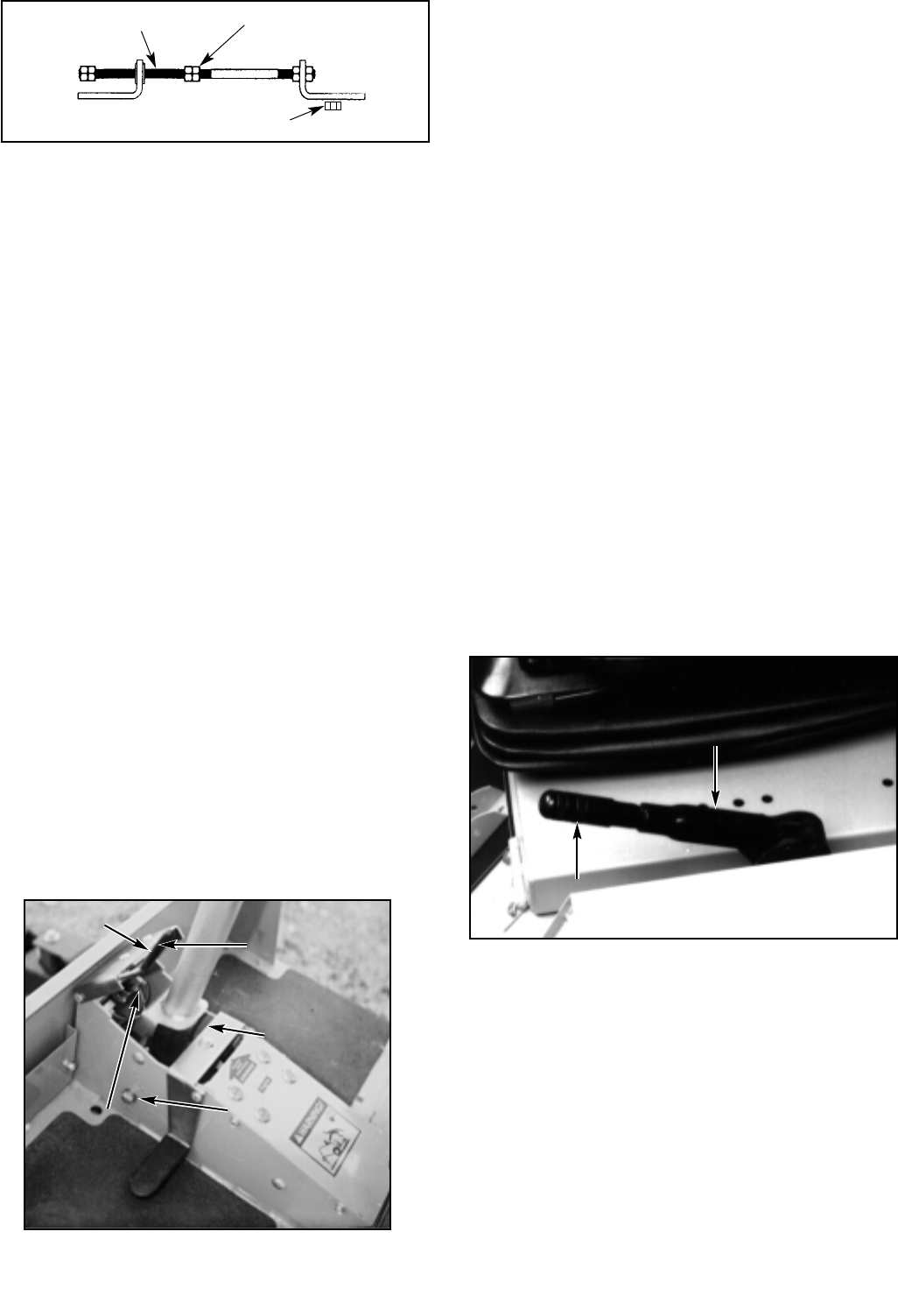
connecting link to the rear pump steering linkage. Fig.
5-3 The unit is now ready to operate.
T-Bar rotational resistance adjustment
On units with serial numbers prior to and including
11374 (last five digits)
Purpose of this spring and connecting link assembly (Fig.
5-3) is primarily to provide the operator with a means of
adjusting the rotational resistance of the T-bar handle.
Before adjusting for rotational resistance, lock the T-bar in
neutral and make sure the spring is vertical, (see previous
step 7).
The spring may be tightened to increase the rotational
resistance or loosened to decrease it to suit the operator’s
comfort. Adjustment may be made by turning the nut (Fig.
5-3) to vary the spring tension until the operator is satisfied
with the resistance to rotation. As a starting point, turn the
tension adjusting nut (Fig. 5-3) until the connecting link
compresses the spring 0.06"-0.10" (1-1/2 - 2 turns). Test
neutral again by raising the neutral lock lever and moving
the T-lever around and returning it again to the neutral
position and locking it. Re-adjust for neutral if necessary.
IMPORTANT: The spring does not need to be very tight
for this system to work properly.
On units with serial numbers after 11374 (last five digits)
To adjust the rotational resistance of the T-bar handle on
these units, lock the T-bar in neutral.
The spring may be tightened to increase the rotational
resistance to suit the operator’s comfort. Adjustment may be
made by loosening the rear pump linkage nut (Fig. 5-6) and
tightening the two spring nuts to compress the spring. When
the operator is satisfied with the resistance to rotation,
tighten the rear pump linkage nut. Test neutral again by
raising the neutral lock lever and moving the T-lever around
and returning it again to the neutral position and locking it.
Re-adjust for neutral if necessary.
Steering lever tension
Lever action should be positive and smooth, allowing free
movement forward and back with very little or no side play.
It should remain where set, when released from your grasp,
anywhere in the forward travel position. If lever is too
loose: loosen the jam nut on steering lever pivot bolt, tighten
the tension nut to remove slack and tighten the jam nut (Fig.
5-7).
Wear plate
Adjustable wear plates, attached to the front and rear
neutral lock devices positions the control lever in neutral.
Loosen the mounting cap screws and move the plate (holes
are slotted for this purpose) to compensate for wear, or when
tractor wants to creep when neutral locks are engaged.
When plate becomes worn to the point that adjustment is no
longer possible, it can be turned over to utilize the opposite
side. Replace plate when both sides are worn (Fig. 5-7).
Parking brake adjustment
Occasionally check the parking brakes by engaging the
parking brake lever; start engine and set throttle at slow idle.
Advance steering control lever approximately 1” forward;
brakes should hold tractor from movement.
When adjustment becomes necessary, disengage the
parking brake lever and rotate the knob located on end of
lever clockwise (Fig. 5-8).
Electrical system
A 12-volt, negative ground system is used for ignition and
accessories throughout. The battery is located behind the
hinged compartment cover on the left fender (Fig. 5-8). A
BCI-group 24F battery is recommended for all-season use.
The batteries recommended for the different machines are:
4300/4500....12V, 350 CCA (cold cranking amps)
4200.............12V, 65AH, 385 CCA (cold cranking amps)
4400/4420....12V, 80AH, 500 CCA (cold cranking amps)
4600.............12V, 80AH, 500 CCA (cold cranking amps)
A heavier reserve battery may be required if extremely
cold conditions make engine cranking difficult.
Follow battery manufacturer’s maintenance, safety,
728444 Rev. 11/02
5-10
Figure 5-8
PPaarrkkiinngg bbrraakkee
lleevveerr
Adjustment
Knob
Figure 5-7
NNeeuuttrraall LLoocckk
SSwwiittcchh
Wear Plate
Front Neutral
Lock Lever In
Forward (Up)
Position
Jam Nut and
Tension Nut On
Other End Of This
Cap Screw
Wear Plate
Figure 5-6
Spring
Rear pump linkage nut
Spring nuts



